我が初恋よ、枯れ落ちろ
https://vndb.org/v18685
Dies irae is back, and in a way I never would have predicted: with a prequel / side story / fandisc-like thing focusing on Wilhelm Ehrenburg (aka Kaziklu Bey) during the early days of the Longinus Dreizehn Orden. He meets a mysterious young lady by the name of Claudia Jerusalem (voiced by Noto Mamiko), and the two get entangled in… well, all sorts of things. You might be wondering why Wilhelm, of all people, would be starring in a “love” story, and how Claudia even comes into the picture, but in the end… I thought things worked out in a way that satisfied the Dies fan in me.
Opening:
IkaBey (for that is the squid-tastic shortened version of the title) begins its story in New York, a short while before Wilhelm travels to Japan and partakes in the events of the main game. He’s approached by a female reporter by the name of Dinah Malloy (no doubt inspired by interviewer Daniel Molloy from Anne Rice’s Interview with the Vampire), eager to know the dreaded Kaziklu Bey’s life story. So she whips out a recording device, and he starts talking.
The VN is indeed framed (and occasionally interrupted by) Dinah’s interview, much like Rice’s novel and its movie adaptation, while the majority of the story is basically a flashback. We begin in 1944, during the Warsaw uprising, where Wilhelm, uh, accidentally saves Claudia and decides to basically take her under his wing. Before you get suspicious: no, he doesn’t do this out of the kindness in his heart, as his goal is (obviously) to eventually kill and devour her, but the VN goes into detail when explaining his goals and how they relate to what Claudia wants. But I don’t want to reveal everything, so yeah. Either way, that’s the basic premise you start with.
The storyline is pretty enjoyable: it might start out with a simple trip to a forest, but by the end of it, it certainly gains its unique, Masada-esque flavor, while also having a somewhat distinct, dark fairy tale-esque atmosphere to it in certain aspects. The pacing is tight, and I never found myself fatigued in the same way I did during the original Dies irae; admittedly, the climax does seem to go on forever and ever, but its conclusion is well worth it. The main themes are established, reiterated and developed throughout the course of the story, then finally wrapped up in a satisfying conclusion / final confrontation that not only makes it fit into the Dies world (hell, it’s even explained why Wilhelm can go on and be the Wilhelm he is in Dies after having experienced all that he did in IkaBey), but also makes a few nods at Kajiri Kamui Kagura.
Of course, I’m not saying that you must *absolutely* read KKK in order to enjoy IkaBey, but those of you who have will experience a few “ohhh” moments. But I guess you can always just play KKK after IkaBey and probably get the references retrospectively. And while we’re on the topic, I’m not sure how Dies newcomers would react to this game. I ~kinda~ feel like it could be enjoyed as a standalone work and a way to whet one’s appetite for the main game, but a lot of its enjoyment also stems from prior familiarity with the franchise. Still, it’s a far more tempting pick as a starter VN in the Dies universe compared to the main game itself, which is like a million hours long.
Dies irae is the kind of VN where the antagonists tend to outshine the heroes, so seeing things from Wilhelm’s perspective was quite a welcome change, and so were all the light-hearted moments of characters bickering and such (Wilhelm’s tendency to call Beatrice クソチビ was kind of adorable, just to bring up one example). As you might expect, plenty of familiar faces make a return in the game, though not all of them with equal amounts of presence: the most prominent supporting characters, in retrospect, are probably Beatrice (yay), Mercurius, and maybe Lisa, with certain other LDO members also making brief cameos. Except for Trifa, who’s kinda… not in the game for plot-related reasons already explained as part of his backstory in Dies. Beatrice and Lisa do get some extra scenes pertaining to their respective backstories, which I really quite enjoyed — it doesn’t really have anything we didn’t already know, but it was nice to see things from a new perspective. And then there’s that brief scene with Eleonore and Reinhard that would no doubt make my ovaries quiver, if I had ovaries.
As for Mercurius, he does actually have more speaking lines than I was anticipating, and his presence (along with what he reveals) both serves to establish some key things in IkaBey’s story while also enriching the existing Dies lore. So while Reinhard’s role being somewhat minimal is regrettable, there are a number of scenes with Toriumi Kousuke doing his usual thing as Mercurius, which made up for it. Still, the spotlight mostly falls on Wilhelm and the two newcomers, Claudia and Ludwig van Rosenkranz. Claudia’s… an interesting case. Even as someone who generally doesn’t care much for Noto Mamiko’s voice, I ended up really liking her in this role, and her both silly and serious interactions with Wilhelm are some of the most enjoyable bits in the VN. As for Rosenkranz, it’s hard to talk about him without spoilers, but his (back)story more or less constitutes a big part of the main plot. Let’s just leave it at that.
Visually, the game looks fantastic. While it does reuse some old art from the original Dies, IkaBey is jam-packed with brand new CGs that look gorgeous and really showcase G Yuusuke’s talent, but I’m inserting some screenshots into this review to prove just that. Claudia’s design in particular is fantastic, and basically every CG she appears in is a joy to look at. Musically, you’ll mostly hear the same old tracks recycled from Dies, with a few new compositions thrown into the mix: you can easily spot which ones are the new tracks because they sound very, uh… Senshinkan-y by comparison, for lack of a better expression. I did enjoy the new music, with my favorite probably being “Si vis amari ama” — this song does have a certain KKK-ish flavor to it, ironically enough. I’d recommend not looking the song up, btw, it’s cooler if you hear it first in-game so it can catch you by surprise.
I know I keep using this word, but really, IkaBey was a satisfying addition to the Shinza repertoire, despite not being anything groundbreaking (though I doubt anyone expected it to reinvent the wheel). I dunno, maybe it’s the silly, Anne Rice-referencing title that made me not take the game too seriously at first, but in the end, I was surprised by how much of a pleasant, complete experience it managed to deliver, although in somewhat of a bite-sized format. To use a very gamer-y example, I’d say the game felt more like a proper expansion pack (roughly around 10-ish hours in length, give or take a few), as opposed to a soulless DLC cash-in, which might sound like a strange analogy to draw, but that’s basically how I feel about this. In any case, the bottom line is that anyone who’s enjoyed Masada’s works in the past should give this one a read at one point.
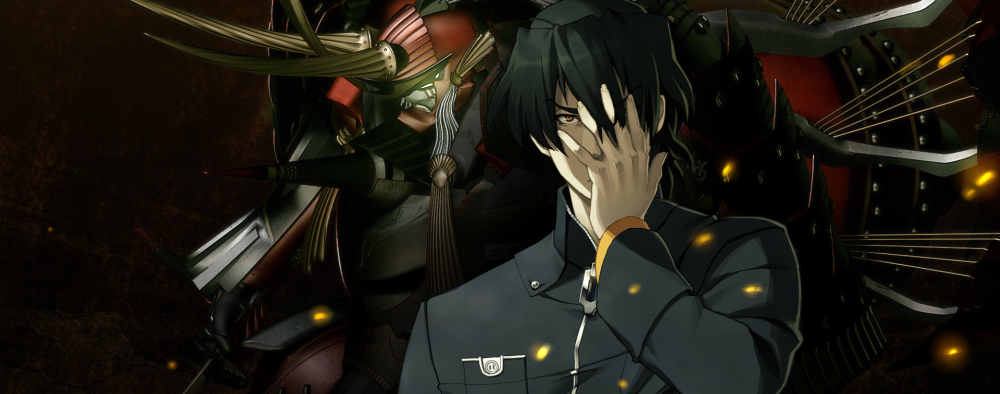
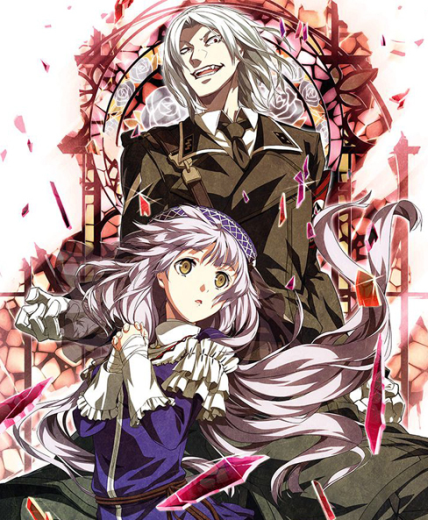
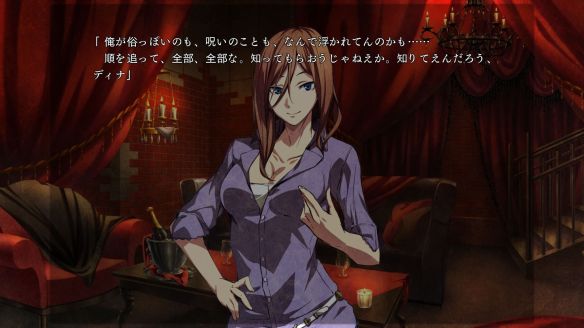

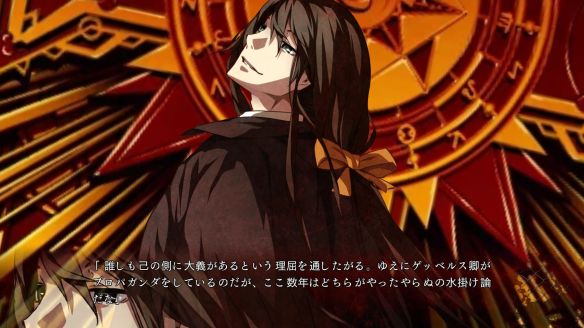
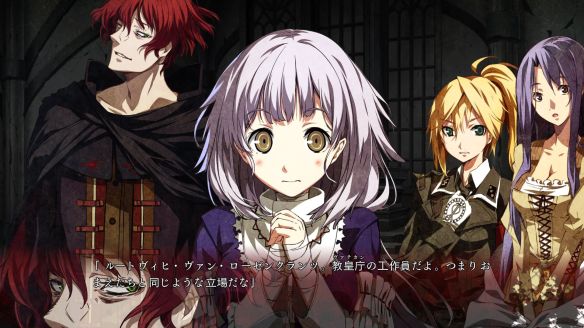

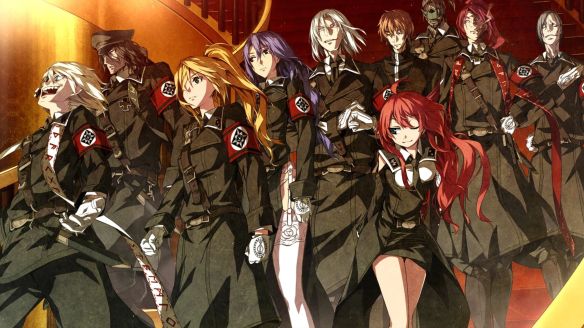
To rephrase a certain Subahibi quote, every man has ovaries in his heart. at least when it comes to Reinhard.
Anyways, no surprises in this review. I mean, did anyone actually expect this to be bad? Or that Noto Mamiko would be anything but an all-star that she is? In any case, good news are good. Picking the game to read after I finish Dies is going to be even more difficult now.
“Anyways, no surprises in this review. I mean, did anyone actually expect this to be bad?”
Not really, but it could’ve been meh. Ikabey is a better addition to Dies irae than Re:Blade Arts is to Muramasa.
True, true. Then again, it is written by the same author as the original, unlike Re:Blade Arts.